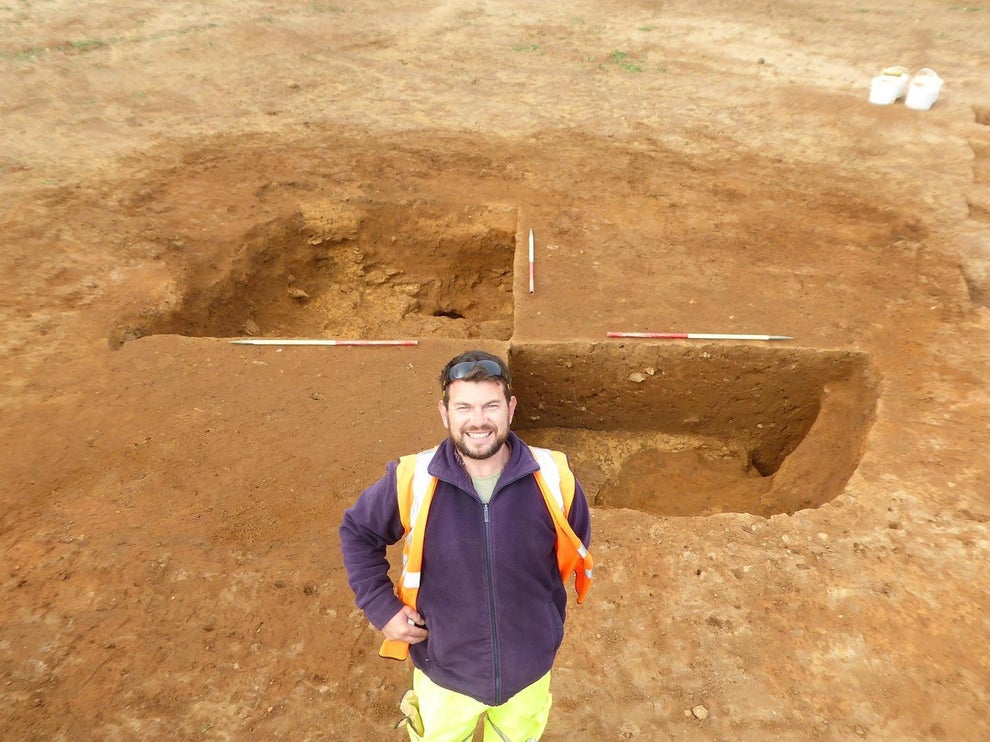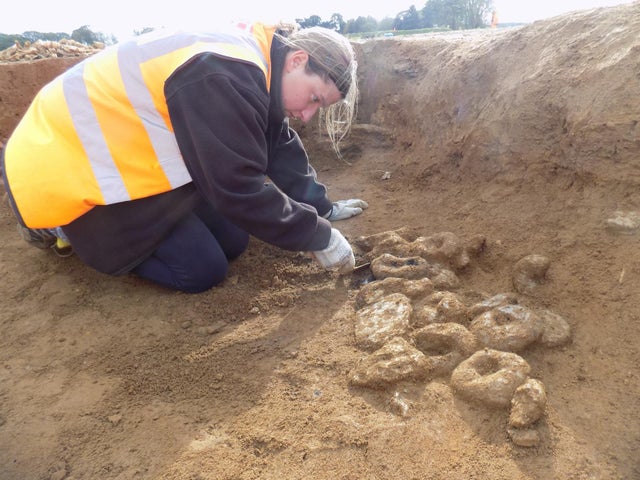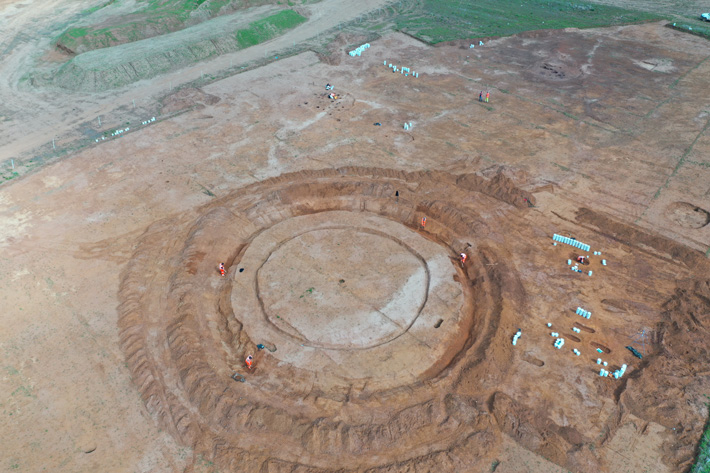4,000 Years old Anglo-Saxon Settlement and Cemetery Unearthed in England
The Northampton Chronicle & Echo reports that an Anglo-Saxon settlement and cemetery, and Bronze Age barrows and burials, were discovered in England’s East Midlands during an archaeological investigation conducted by researchers from the Museum of London Archaeology ahead of a development project.
Traces of more than 20 structures were unearthed at the Anglo-Saxon settlement site. Weapons, cosmetic kits, combs, thousands of beads, some 150 brooches, 75 wrist clasps, and 15 chatelaines were recovered from the more than 150 Anglo-Saxon burials.
The site was excavated as part of pre-construction planning requirements at Overstone Farm where Barratt and David Wilson homes intend to build two to five-bedroom homes, a school and amenities, as part of a new housing development.

Jewellery, weapons and more were found.
An archaeology firm – Museum of London Archaeology (Mola) – was appointed and over the course of 12 months, the archaeologists undertook detailed excavation and recording across a total of 15 hectares.
The work revealed 154 Anglo-Saxon burials, many containing grave goods including weapons, beads and brooches. Simon Markus, project manager at MoLA, said: “The Overstone site contains by far the biggest Anglo-Saxon cemetery ever found in Northamptonshire.

“It is also rare to find both an Anglo-Saxon settlement and a cemetery in a single excavation.
An overview of the site in Overstone.

“The excavations will help us understand the way people lived in both the Anglo- Saxon period, around 1,500 years ago as well as the Bronze Age, nearly 4,000 years ago.
“The human remains will tell us about diet, health and even the origins of the people themselves whilst their buildings can teach us what their day-to-day lives were like and how they utilised the local landscape in these two different periods.”
Jewellery found on the site included roughly 150 brooches, 15 rings, 2,000 beads, 75 wrist clasps and 15 chatelaines – decorative belt hooks.
Other findings included weapons such as spears and shields and everyday items like cosmetic kits and combs.
The site also contains a previously unknown Anglo-Saxon settlement of 22 structures, with 20 more Anglo-Saxon buildings scattered around the site, together with earlier prehistoric evidence including three Bronze Age round barrows, 46 prehistoric burials, and four Bronze Age buildings.
John Dillion, managing director at Barratt and David Wilson Homes South Midlands, said: “We’re blown away by the findings at our site in Overstone and have enjoyed learning more about what the land was previously used for.
“It is amazing to think that settlers have been building homes on this site for around 4,000 years, and we hope to continue this long-standing tradition with our new and already flourishing community.”
All of the findings from the excavations have been removed from the site and are now being analysed by MOLA’s specialist teams.





